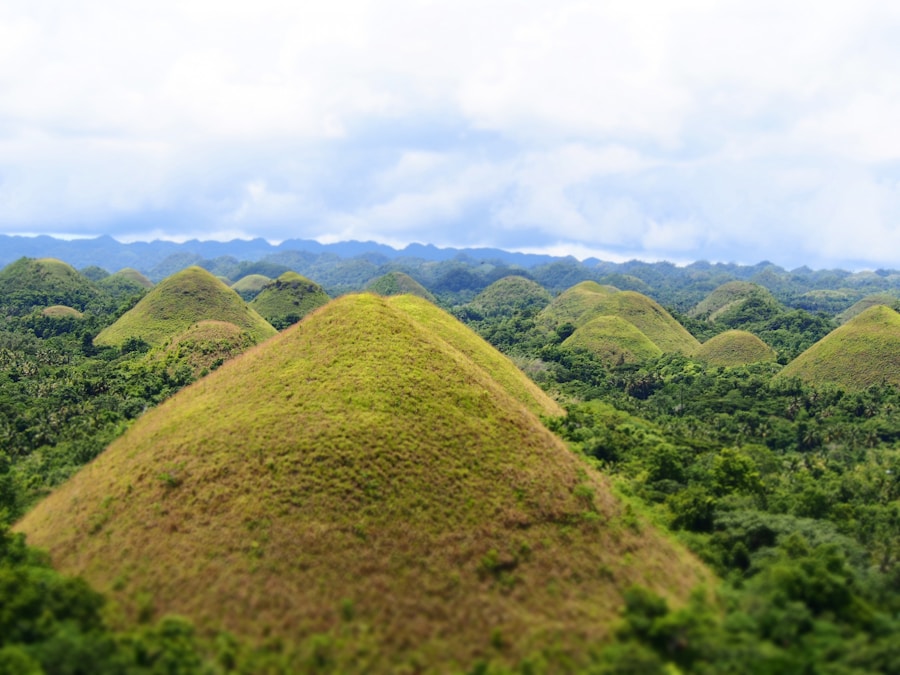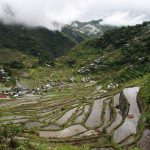Download links
How to install The Mysterious Beauty of Chocolate Hills APK?
1. Tap the downloaded The Mysterious Beauty of Chocolate Hills APK file.
2. Touch install.
3. Follow the steps on the screen.
Description
The Chocolate Hills, a geological wonder located in the Bohol province of the Philippines, have captivated visitors and researchers alike with their unique conical shapes and lush green landscape. The origin of these hills is steeped in both scientific inquiry and local folklore. According to geological studies, the formation of the Chocolate Hills can be traced back to the Pleistocene epoch, approximately 1 to 2 million years ago.
During this time, the region was submerged underwater, and the accumulation of marine limestone and coral deposits laid the groundwork for what would eventually become these iconic hills. Over millennia, tectonic activity caused the land to rise, exposing these limestone formations to the elements. Local legends also play a significant role in the narrative surrounding the origin of the Chocolate Hills.
One popular tale tells of a giant named Arogo who fell in love with a mortal woman. When she passed away, Arogo wept for her, and his tears formed the hills we see today. This story not only adds a layer of cultural richness to the site but also reflects the deep connection that the local community has with their natural environment.
The interplay between scientific explanation and folklore creates a multifaceted understanding of the Chocolate Hills, making them not just a geological phenomenon but also a symbol of local identity and heritage.
Key Takeaways
- Chocolate Hills are a natural geological formation located in the Bohol province of the Philippines.
- The hills are made of limestone and were formed by the uplift of coral deposits and the action of rainwater and erosion over millions of years.
- The unique flora and fauna of Chocolate Hills include various species of plants, birds, and mammals, some of which are endemic to the area.
- The local community considers Chocolate Hills to be a symbol of unity and prosperity, and it is an important cultural and religious site for the people of Bohol.
- Efforts to promote tourism and conservation at Chocolate Hills include the establishment of viewing decks, visitor centers, and the implementation of sustainable tourism practices.
The Geological Formation of Chocolate Hills
The geological formation of the Chocolate Hills is a fascinating study in erosion and sedimentation processes. These hills are primarily composed of limestone, which is a sedimentary rock formed from the accumulation of marine organisms over millions of years. As tectonic forces uplifted the region, rainwater began to erode the limestone, creating the distinct conical shapes that characterize the landscape today.
The process of karstification, where soluble rocks like limestone dissolve in water, played a crucial role in shaping these hills. Over time, this erosion has resulted in the smooth, rounded tops and steep sides that make the Chocolate Hills so visually striking. The unique topography of the area is further enhanced by its tropical climate, which contributes to the lush vegetation that covers the hills during the rainy season.
This seasonal transformation not only adds to their aesthetic appeal but also highlights the dynamic nature of this geological formation. The Chocolate Hills are not merely static structures; they are living landscapes that change with the seasons, offering a different experience to visitors throughout the year.
The Unique Flora and Fauna of Chocolate Hills
The biodiversity found within and around the Chocolate Hills is as remarkable as their geological features. The region is home to a variety of plant species that thrive in its unique environment. Grasses dominate the landscape, particularly during the dry season when they turn a rich brown color.
However, during the rainy months, vibrant green grasses flourish, creating a stunning contrast against the blue sky. Additionally, various species of wildflowers bloom sporadically throughout the hills, adding splashes of color to the otherwise uniform landscape. In terms of fauna, the Chocolate Hills are home to several endemic species that are adapted to this specific ecosystem.
Among them are various bird species such as the Philippine tarsier, one of the smallest primates in the world, which can be found in nearby forests. The tarsier’s large eyes and nocturnal habits make it a fascinating creature for wildlife enthusiasts. Other animals include various reptiles and insects that contribute to the ecological balance of this unique habitat.
The presence of these species underscores the importance of conservation efforts in maintaining not only the geological integrity of the Chocolate Hills but also their rich biodiversity.
The Cultural Significance of Chocolate Hills to the Local Community
| Aspect | Data/Metric |
|---|---|
| Number of Hills | There are 1,268 hills spread over an area of 50 square kilometers. |
| Local Legends | The hills are steeped in local folklore, with one legend suggesting that the hills were formed from the tears of a giant who lost his love. |
| Tourism | The Chocolate Hills are a major tourist attraction, drawing thousands of visitors each year and contributing significantly to the local economy. |
| Cultural Festivals | The local community celebrates the Chocolate Hills through cultural festivals and events, showcasing traditional dances, music, and food. |
| Environmental Importance | The hills are a protected natural monument, highlighting the importance of preserving the local environment and ecosystem. |
The cultural significance of the Chocolate Hills extends far beyond their physical beauty; they are deeply embedded in the identity and traditions of the local community. For many residents of Bohol, these hills are not just a tourist attraction but a source of pride and cultural heritage. They feature prominently in local folklore and are often depicted in art and literature as symbols of Bohol’s natural beauty.
Festivals celebrating local culture frequently incorporate elements inspired by the hills, showcasing traditional dances and crafts that reflect their importance. Moreover, the Chocolate Hills serve as a gathering place for community events and celebrations. Local festivals often include activities that highlight traditional practices and promote unity among residents.
This connection to cultural identity fosters a sense of stewardship among locals, encouraging them to protect and preserve this natural wonder for future generations. The hills are not merely a backdrop; they are an integral part of Bohol’s cultural landscape, representing both history and continuity in a rapidly changing world.
The Tourism and Conservation Efforts at Chocolate Hills
Tourism plays a vital role in supporting both the local economy and conservation efforts surrounding the Chocolate Hills. As one of Bohol’s most famous attractions, they draw thousands of visitors each year who come to marvel at their unique beauty and learn about their geological significance. This influx of tourists has led to increased investment in infrastructure and services in the area, providing economic opportunities for local residents through hospitality, guiding services, and artisanal crafts.
However, with increased tourism comes the responsibility to ensure that these natural wonders are preserved for future generations. Conservation efforts have been implemented to protect both the geological formations and their surrounding ecosystems from potential degradation caused by human activity. Local government initiatives focus on sustainable tourism practices that minimize environmental impact while promoting awareness about conservation among visitors.
Educational programs aim to inform tourists about responsible behavior while exploring this delicate landscape, ensuring that both its beauty and biodiversity are safeguarded.
The Mysterious Legends and Folklore Surrounding Chocolate Hills

The allure of the Chocolate Hills is further enhanced by a rich tapestry of legends and folklore that have been passed down through generations. One such legend tells of two feuding giants who engaged in a fierce battle over a beautiful maiden. After days of fighting, they eventually reconciled but left behind piles of stones that transformed into hills over time.
This story not only serves as an entertaining narrative but also reflects themes of conflict resolution and harmony within nature. Another popular tale involves a giant named Arogo who fell deeply in love with a mortal woman named Aloya. When Aloya died unexpectedly, Arogo was heartbroken and wept for her loss.
His tears formed into hills as they fell to the ground, creating what we now know as the Chocolate Hills. This poignant story resonates with many locals who see it as a representation of love’s enduring power even in loss. Such legends enrich the cultural fabric surrounding these hills, making them not just geological formations but also vessels of human emotion and storytelling.
The combination of scientific understanding and rich folklore creates an intricate narrative around the Chocolate Hills that appeals to both tourists and locals alike. Visitors are often enchanted not only by their stunning visual appeal but also by the stories that breathe life into these natural wonders. As such, these hills stand as a testament to both nature’s artistry and humanity’s enduring connection to it through stories passed down through time.
If you’re interested in exploring more unique natural wonders like the Chocolate Hills, you may want to check out this article on freefire.mom which discusses exciting prizes to be won in the Freefire lottery. Just like the Chocolate Hills in the Philippines, the Freefire lottery offers a chance to experience something truly special and unexpected. So, if you’re a fan of thrilling surprises, be sure to read more about the exciting prizes awaiting lucky winners.
FAQs
What are the Chocolate Hills?
The Chocolate Hills are a geological formation located in the Bohol province of the Philippines. They are made up of around 1,200 to 1,776 conical limestone hills, which are covered in green grass that turns brown during the dry season, giving them a chocolate-like appearance.
How were the Chocolate Hills formed?
The exact formation process of the Chocolate Hills is still a subject of debate among geologists. However, it is widely believed that they are the result of the uplift of coral deposits and the action of rainwater and erosion over millions of years.
What is the significance of the Chocolate Hills?
The Chocolate Hills are a major tourist attraction in the Philippines and are considered a natural wonder. They have been declared the country’s third National Geological Monument and are included in the Tentative List for UNESCO World Heritage inscription.
Can visitors explore the Chocolate Hills?
Yes, visitors can explore the Chocolate Hills by climbing the viewing deck in the town of Carmen, which offers panoramic views of the hills. There are also hiking trails and ATV tours available for those who want to explore the area more closely.
Are there any legends or myths associated with the Chocolate Hills?
One popular legend about the formation of the Chocolate Hills involves two giants who were throwing rocks and sand at each other in a fit of rage, and when they reconciled, they left behind the mess they had made, which became the Chocolate Hills. This legend is a popular story among locals and adds to the mystique of the hills.






